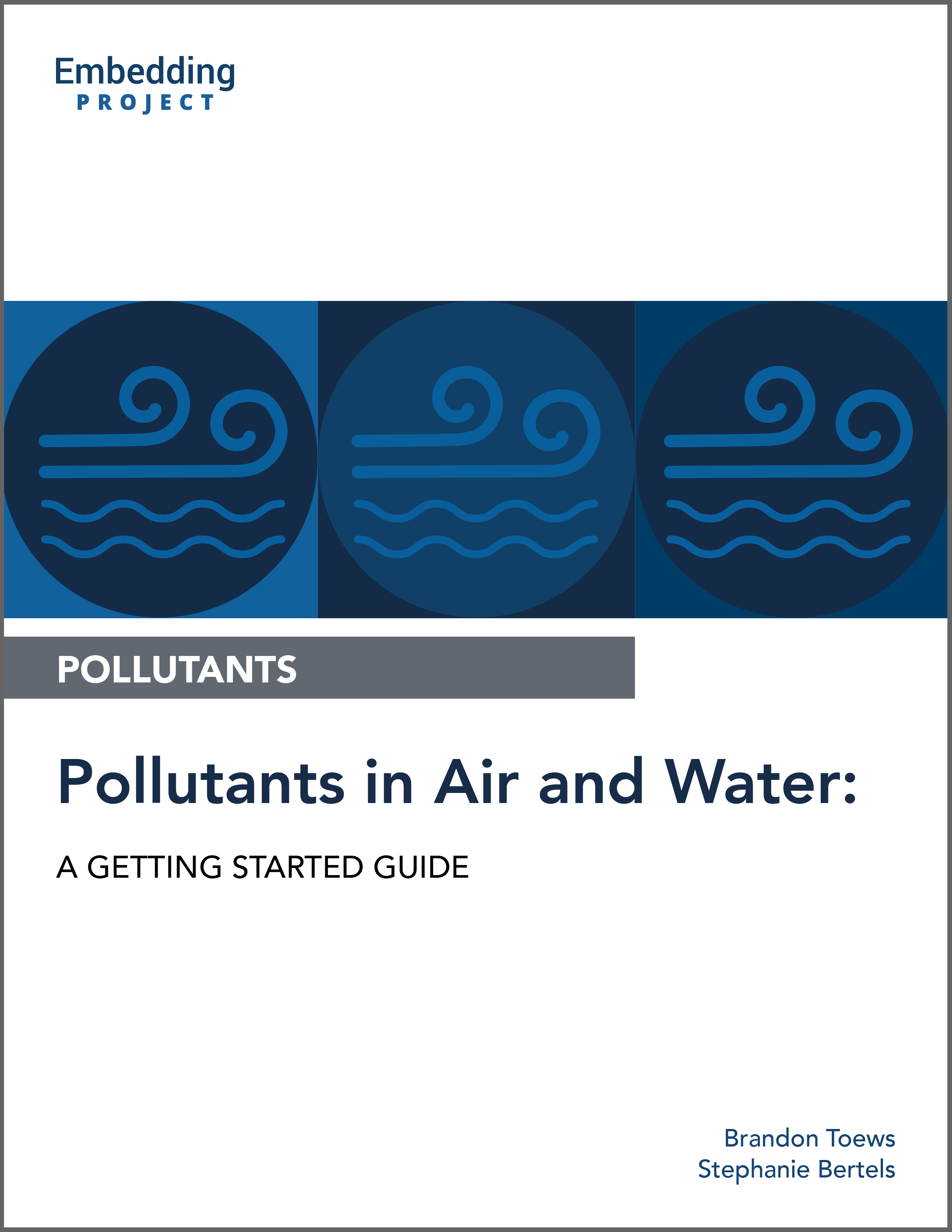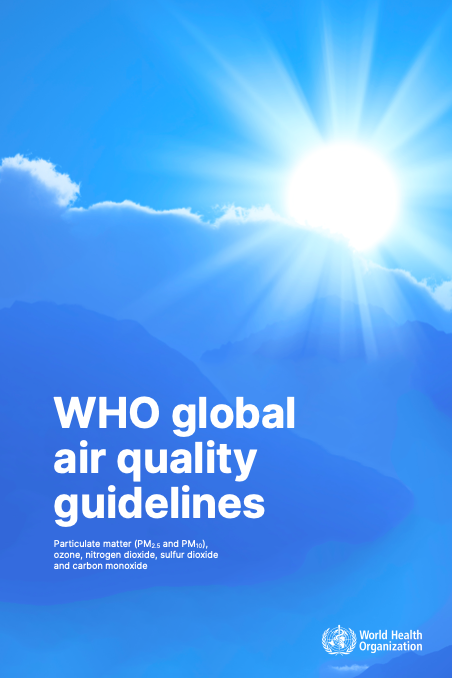Gaseous Air Pollutants and Odours
Description
Including volatile organic compounds (VOCs); carbon monoxide; sulphur and nitrogen oxides; ozone; and odours.
Share this Subissue on:LinkedIn
Resources
Pollutants in Air and Water: A Getting Started Guide
Pollutants in Air and Water: A Getting Started Guide
Unmanaged and improperly managed pollutants are having a dire impact on human health and are major contributors to the global climate and nature loss crises. Increasing levels of pollution also have significant economic impacts and reduce the productivity, cleanliness, liveability, and overall resilience of communities.
Businesses have a crucial role to play in protecting people and nature. Anchored in research, our Pollutants in Air and Water: A Getting Started Guide aims to support your company as it develops a strategy to eliminate pollutants from its own operations and in its value chain.
Other Resources
WHO Global Air Quality Guidelines
This comprehensive guide was created by the World Health Organisation (WHO) for policy-makers, lawmakers, and technical experts, including industrial stakeholders and environmental impact assessment practitioners. It was created to offer quantitative, health-based recommendations for air quality, with the ultimate goal of providing guidance that can help to reduce the burden of pollutants on health worldwide. It provides specific recommendations on a range of air pollutants, including particulate matter, ozone, nitrogen and sulfur dioxide, carbon monoxide, and more. It also provides recommendations for implementation, monitoring, and evaluation of the guidelines.
Air pollution data portal
The WHO's Air Pollution Data Portal can help you to quickly access data and databases, factsheets, interactive tools, and key publications on ambient and household air pollution.
The WELL Air concept
The WELL Air concept was created to promote indoor air quality through a diverse range of holistic design strategies aimed at reducing harmful exposure to contaminants. This guidance addresses a broad array of topics that will help you to improve the air quality in your facilities, including ventilation design, pollution infiltration management, air quality monitoring and awareness, and microbe and mold control.
Volatile Organic Compounds' Impact on Indoor Air Quality
Volatile organic compounds (VOCs) are gaseous emissions from certain solids or liquids that may have short- and long-term impacts on human health. This page from the Environmental Protection Agency will help you to become familiar with the sources of VOCs, their health effects, and steps to reduce exposure.
A Beginner’s Guide to NOx, NO and NO2 as Air Pollutants
This blog provides an accessible introduction to nitrogen oxides, the differences between them, their sources, and their impact to humans and the environment.
Air Emissions and Ambient Air Quality
These environmental, health, and safety guidelines from the International Finance Corporation apply to facilities or projects that generate emissions to air at any stage of the project life-cycle. It is intended to complement industry-specific emissions guidance presented in the Industry Sector Environmental, Health, and Safety (EHS) Guidelines by providing information about common techniques for emissions management that may be applied to a range of industry sectors; providing an approach to the management of significant sources of emissions; providing specific guidance for assessment and monitoring of impacts; and providing additional information on approaches to emissions management in projects located in areas of poor air quality.
The world's forgotten greenhouse gas
Agricultural activities may be responsible for more than a quarter of human-caused climate-warming emissions, but most of these emissions are not from carbon dioxide. The primary culprit, rather, is nitrous oxide - a compound approximately 300 times as potent as carbon dioxide at heating the atmosphere. This article explains how humanity has tipped the Earth's nitrogen cycle out of balance, and highlights solutions for runaway nitrous oxide emissions that your company can support.
A Practical Guide For Business: Air Pollutant Emission Assessment
Developed by the Climate and Clean Air Coalition, Stockholm Environment Institute, and IKEA Group, this guide can help you to quantify air pollutant emissions within your value chain. The guide uses introduces a method for the comprehensive accounting of emissions, and provides a six-step approach for developing an air pollutant emission inventory for a broad range of contaminants, including particulate matter (PM2.5, PM10), Sulphur Dioxide (SO2), Nitrogen Oxides (NOx), Ammonia (NH3), and Carbon Monoxide (CO). The guide also introduces approaches to mitigation and implementation, and explains how an emissions inventory can be used for decision-making and strategy.





